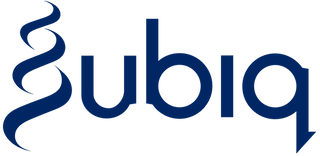-
As the number of adaptive sport and recreation programs increases, athletes with disabilities now have more opportunities than ever to participate in sports, recreation, and physical fitness. In response, students pursuing a career in sport management need to be fully prepared to incorporate adaptive sport and recreation into their organizations.
Introduction to Adaptive Sport and Recreation is a groundbreaking text designed to address this need. Written and edited by a team of esteemed educators and professionals, this comprehensive textbook offers a broad exploration of sport and recreation for people with disabilities within the framework of sport management.
It begins with social and theoretical discussions covering topics such as defining disability, confronting ableism, considering the concepts of inclusion versus integration, and understanding contact theory and social isolation theory. Students are exposed to participation barriers faced by athletes with disabilities and learn about models of disability perception and legal efforts to address disparities (such as the Americans with Disabilities Act). Also discussed are the disability rights movement as well as legal efforts and policies that have affected access to sport and recreation opportunities for people with disabilities.
Perhaps the most visible example of adaptive sports is the Paralympic Games. The history of this competition is explored in detail, and the text offers an overview of other elite adaptive global competitions as well. Differences between the Paralympics and the Special Olympics are examined, including their participants, organizational philosophies, and governance.
The text explores media coverage of adaptive sports and explains how the stereotypical frames of the past—which often clash with how athletes wish to be presented—are yielding to today’s more empowering and preferred position of viewing participants as athletes.
Students will also see how opportunities for adapted sport are expanding. The long-term athlete development (LTAD) model has been applied to adaptive sports at all levels of competition worldwide. A sidebar spotlights efforts made in this area by Swimming Canada. In addition, the benefits and challenges of offering adaptive programs for military populations and young people are discussed.
Because the costs associated with adaptive sport programs often exceed those of able-bodied sports, financial considerations are sometimes cited as a barrier. Students will learn about typical expenses for adaptive programs, along with different ways of identifying funding sources.
The text concludes with an insightful case study featuring the University of Alabama Adapted Athletics (UAAA) program. This case study offers a managerial perspective on starting an athletics program for athletes with disabilities by exploring all facets, including sports offered, funding, and facilities.
Throughout the text, profile sidebars, critical thinking exercises, and key points foster further discussion and enhance understanding of the concepts presented.
Introduction to Adaptive Sport and Recreation serves as the authoritative guide to prepare students to integrate adaptive sport and recreation programs in their future work as a sport management professional.
- Fiction
- Children's and Young Adults Fiction
- Classic Fiction
- Contemporary Fiction
- Crime Fiction
- Graphic Novels
- LGBTIQA+
- New Zealand Fiction
- Poetry
- Children's and Young Adults Fiction
- Children's and Young Adult Fiction
- Pasifika Children's and Young Adult Fiction
- Picture Books
- Māori Children's and Young Adult Fiction
- New Zealand Children's and Young Adult Fiction
- New Zealand Picture Books
- Contemporary Fiction
- Fantasy
- Historical Fiction
- Horror and Ghost Stories
- Science Fiction
- Short Stories
- New Zealand Fiction
- New Zealand Classic Fiction
- New Zealand Crime and Thrillers
- New Zealand Fantasy and Sci-Fi
- New Zealand Graphic Novels and Manga
- New Zealand Historical Fiction
- New Zealand Horror and Ghost Stories
- New Zealand Short Stories
- Non-Fiction
- Arts and Artists
- Business and Law
- Health and Wellness
- Humanities
- Language and Education
- Lifestyle Books
- Māori Studies Books
- New Zealand Non-Fiction
- Pasifika Books
- Reference
- Science and Technology
- Social Sciences
- LGBTIQA+ Non-Fiction
- Medicine
- Veterinary Medicine
- Nursing
- Arts and Artists
- Architecture
- Art and Artists
- Dance
- Design and Graphic Design
- Fashion
- Film Studies
- Media Studies
- Music
- Photography
- Theatre Studies
- Business and Law
- Accounting and Finance
- Business Communication Studies
- Business Information Systems
- Business Statistics
- Careers Advice
- Economics
- International Business
- Investment
- Law
- Management
- New Zealand Business Studies
- New Zealand Law
- Tourism and Hospitality
- Health and Wellness
- Diet and Nutrition
- Health and Wellness
- Mind Body Spirit
- Self-help and Personal Development
- Humanities
- Ancient History
- Ancient Languages
- Anthropology and Archaeology
- Disability Studies
- Gender Studies
- History
- Philosophy
- Politics
- Religion and Spirituality
- Language and Education
- Education
- ESOL and ELT
- Language and Literacy
- Language Teaching and Learning
- Languages Chinese
- Languages French
- Languages German
- Languages Italian
- Languages Japanese
- Languages Korean
- Languages Spanish
- Library Studies
- Linguistics
- Literary Studies
- Lifestyle Books
- Biography and Memoirs
- Crafts and Hobbies
- Food and Drink
- Gardening
- Humour
- Popular Science
- Sport and Outdoor Recreation
- Travel Writing and Guides
- Māori Studies Books
- Disputed Land Whenua tautohetohe
- Māori Arts and Artists
- Māori Biography and Memoirs Haurongo
- Māori Crafts Mahi ā-ringa
- Māori Culture Mātauranga Māori
- Māori Education Mātauranga
- Māori Fiction and Poetry
- Māori Film and Media Studies
- Māori Food And Drink Kai me te inu
- Māori Health and Wellness Hauora
- Māori History Kōrero nehe
- Māori Indigenous Knowledge Mātauranga Māori
- Māori Mythology Pūrākau
- Māori Politics Tōrangapū
- Māori Religion Whakapono
- Matariki
- Te Reo Māori
- Treaty of Waitangi Tiriti o Waitangi
- New Zealand Non-Fiction
- New Zealand Architecture
- New Zealand Arts and Artists
- New Zealand Biography and Memoirs
- New Zealand Education
- New Zealand Environment and Sustainability
- New Zealand Film and Media Studies
- New Zealand Food and Drink
- New Zealand Gardening
- New Zealand Health and Wellness
- New Zealand History
- New Zealand Natural History
- New Zealand Photography
- New Zealand Politics
- New Zealand Social Services Welfare and Criminology
- New Zealand Sociology
- New Zealand Sport and Outdoors
- New Zealand Travel Writing and Guides
- Religion in New Zealand
- Pasifika Books
- Pacific Arts Crafts and Architecture
- Pacific Biography and Memoirs
- Pacific Culture and Indigenous Knowledge
- Pacific Education
- Pacific Fiction and Poetry
- Pacific Food and Drink
- Pacific Health and Wellness
- Pacific History and Politics
- Pacific Law
- Pacific Natural History
- Pacific Photography Film and Media Studies
- Reference
- Children's and Young Adult Reference
- Dictionaries
- General Reference
- Information Sciences
- New Zealand Children's Reference
- Research Methods
- Science and Technology
- Biology
- Chemistry
- Computing And IT
- Earth Science
- Engineering
- Maths
- Physics
- Trades
- Social Sciences
- Counselling and Therapy
- Psychology
- Social Services Welfare and Criminology
- Social Work
- Sociology
- Medicine
- Administration and Ethics
- Anaesthesiology
- Anatomy and Physiology
- Cardiology
- Clinical and Internal medicine
- Complementary Health
- Dentistry
- Dermatology
- Emergency medicine
- Endocrinology
- Family medicine
- Immunology and Infectious Diseases
- Medical Genetics
- Medical Study Guides
- Neurodiversity
- Neurology
- Obstetrics and Gynecology
- Oncology
- Ophthalmology
- Orthopaedics
- Paediatrics
- Pain Medicine
- Paramedic Studies
- Pathology
- Pharmacology
- Physical medicine and rehabilitation
- Psychiatry and Mental Health
- Public Health Medicine
- Radiology
- Respiratory Medicine
- Sexual Health Medicine
- Speech and Language Disorders
- Sport and Exercise Medicine
- Surgery
- Trans and Non-binary Health
- Urology
- Nursing
- Community Nursing
- Critical Care Nursing
- Geriatric Nursing
- Medical Surgical Nursing
- Mental Health Nursing
- Midwifery
- Nurse Leadership and Education
- Nursing Fundamentals and Skills
- Nursing Pharmacology
- Nursing Study Guides
- Occupational Therapy
- Paediatric Nursing
- Palliatve Care Nursing
- Textbooks
- ACG
- AUT
- College of Natural Health and Homeopathy
- Northtec
- South Pacific College of Natural Medicine
- Speciality Trainees of New Zealand
- Toi Ohomai Institute of Technology
- Unitec Institute of Technology
- University of Auckland
- Wintec Languages
- Stationery & Gifts
- Pens
- Pencils
- Highlighters and Markers
- Exercise Books and Pads
- Planning and Revision
- Art and Craft
- Filing and Storage
- Maths Equipment
- Wrapping
- Gifts and Giftware
- Art and Craft
- Art Pads
- Drawing Supplies
- Glue
- Painting Supplies
- Pins
- Printing Paper and Card
- Scissors and Knives
- Tape
- Visual Diaries
- Filing and Storage
- Binding Materials
- Clipboards
- Clips and Rings
- Dividers
- Document Wallets
- Expanding Files
- Hole Punches
- Pencil Cases and Pen Holders
- Presentation Folders
- Ringbinders
- Rubber Bands
- Staplers and Staples
- Gifts and Giftware
- Bookmarks
- Chocolate
- Colouring Books
- Journals
- Mugs
- Posters
- Playing Cards
- Puzzles
- Tarot Cards
- Tea
- Tote Bags
- Promotions
- Clearance Corner
- Books of the Month - April
- Save 23% on Pre-Orders of Jacinda Arden Memoir
- Up to 20% Off: Virtual Book Club Pick
We've sent you an email with a link to update your password.
Login
Reset your password
We will send you an email to reset your password.




